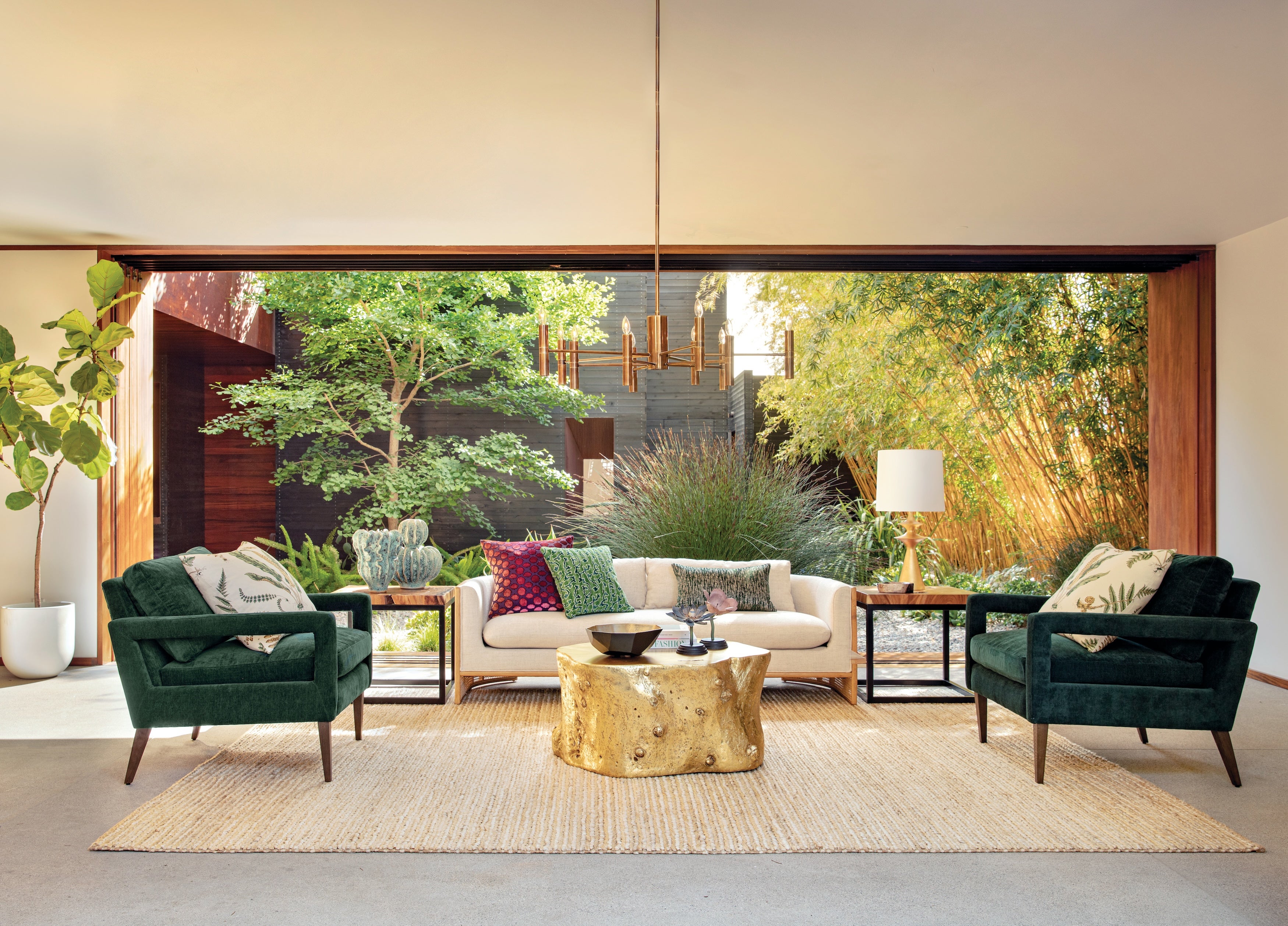Less than two months from the opening of its first store, Perigold is coming down the home stretch in developing a physical representation of its online shopping experience. The debut location is set to open in Houston in June; that will be followed by a second outpost in West Palm Beach, slated to open this fall. For Perigold—Wayfair’s upscale marketplace, which sells a host of trade-friendly brands online—it’s a way to meet its customers in person and show the breadth and width of its luxury offerings firsthand.
“We’ve continued to see our brand resonate with consumers, and we look forward to seeing them in person now,” Rebecca Ginns, global head of Perigold, tells Business of Home. She says that physical stores will represent an additional way for the brand to expand and meet new customers.
The two stores are still being finalized, but the details that are firmed up suggest the company has big plans. The Houston one, located in the upscale Highland Village, comes in at just under 20,000 square feet; the one in West Palm Beach will be in a 30,000-square-foot space in the CityPlace shopping center.
Both stores will feature a mix of inspirational vignettes and merchandise shown by category. There will be some cash-and-carry merchandise; all other purchases, except for special-order goods, will be shipped within the week from the company’s distribution centers.
As with Perigold’s online iteration, a key feature of both stores will be the brand’s Designer Services, where shoppers can meet one-on-one with staff interior designers to work out anything from a single piece of furniture to an entire home, all at no charge. Workspaces and meeting rooms will house fabric swatches as well as samples for categories like tile and fixtures.
“We’ve invested heavily in design,” says Ginns, “and when we say we offer every style for every space, this really shows it.” A shopper, she adds, “can do it all here.”
Some of the room settings and vignettes will be curated by Perigold’s group of designers—featured online on its Designer Shops pages—who already select products from among the platform’s more than 1,000 brands and create digital lookbooks around specific decor themes. Carrying this forward to its new stores helps translate the online experience to these new physical locations, according to Ginns.
The retailer’s to-the-trade program will also be present in the stores. Though Perigold does not break out what percentage of its overall business is represented by the trade, Ginns says it accounts for between 15 and 30 percent of its user base, with these customers generally taking a higher share of sales. Perigold offers trade pricing, and what she calls “concierge level” service to trade customers, including the ability to coordinate deliveries from multiple brands. “That really resonates with our designers,” she says.
The two imminent Perigold stores are part of a larger Wayfair program to open physical locations, which kicked off last year with a full-line store outside of Chicago and will be followed up with a second location next year in Atlanta. A scattering of stores for some of Perigold’s sister brands, including Joss & Main and AllModern, already exist in suburban locations in Massachusetts, Illinois and Texas. Wayfair has also begun to open outlets, but it has not detailed plans for additional Perigold stores. All of these efforts are designed to give the company and its brands an omnichannel presence, something it has lacked with its online-only model.
Wayfair, which did about $12 billion in annual sales last year, does not break out its business by brand, so it’s unknown how the Perigold nameplate is performing versus the parent company, which has shown sales declines the past few quarters as it struggles with profitability.
Like much of the home furnishings industry, Perigold has been challenged by the post-pandemic slowdown, as well as the recent tariffs on the products it sells. “Yes, we’re in uncertain times, but we’ve enjoyed very strong growth since we started Perigold seven years ago, and I believe we are well-positioned as part of a larger company with a good financial position,” says Ginns, who believes the luxury sector could be less impacted by tariffs than other levels of the home business.
“We’re excited about the new stores,” she says. “We know our customers are looking for unique products,” adding that Perigold is the place to get them.
____________
Warren Shoulberg is the former editor in chief for several leading B2B publications. He has been a guest lecturer at the Columbia University Graduate School of Business; received honors from the International Furnishings and Design Association and the Fashion Institute of Technology; and been cited by The Wall Street Journal, The New York Times, The Washington Post, CNN and other media as a leading industry expert. His Retail Watch columns offer deep industry insights on major markets and product categories.





























